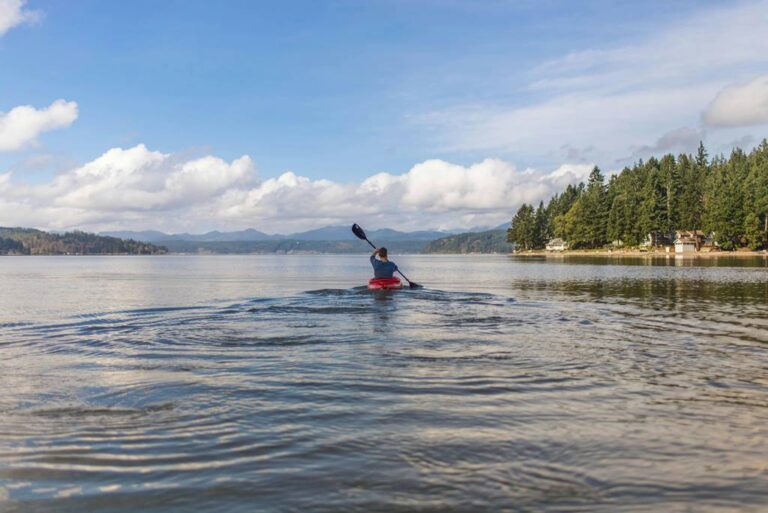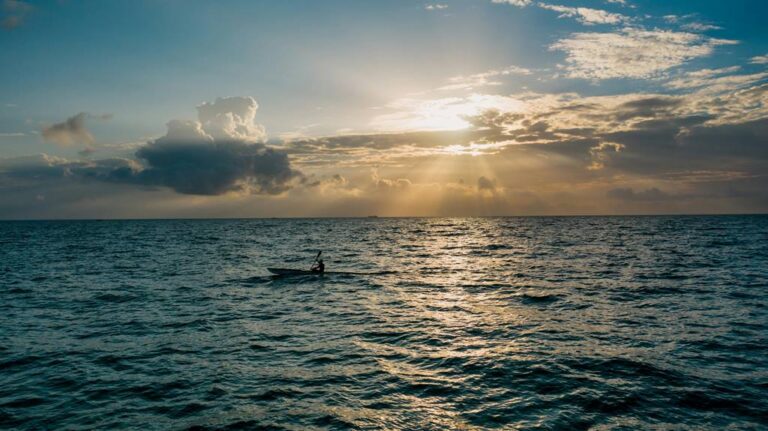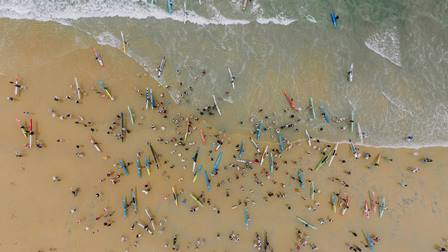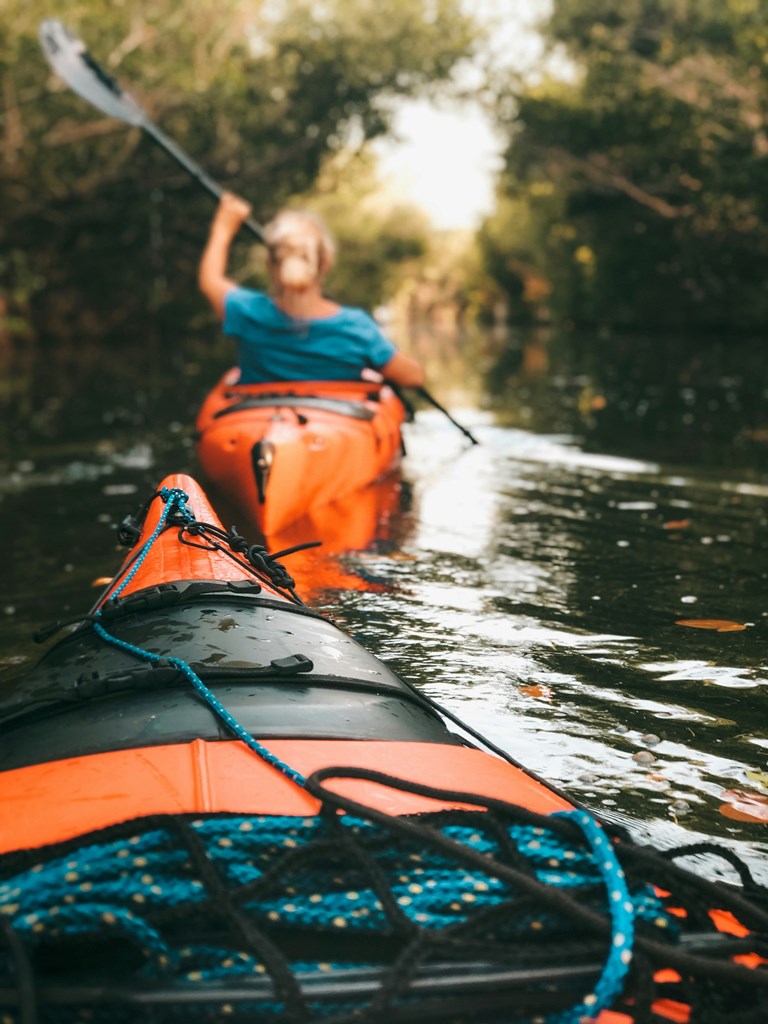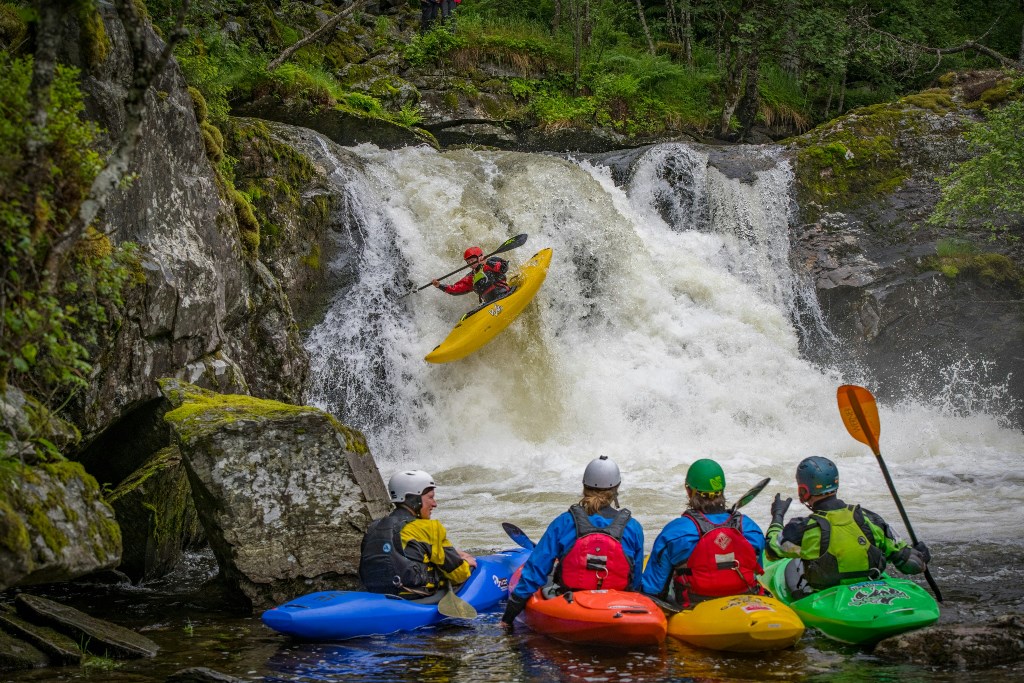
Introduction
Mastering the water with confidence starts with a deep understanding of essential kayak safety. This knowledge isn’t just about ticking a box; it empowers you to become a better kayaker, prepared for both serene glides and unexpected situations. This guide dives deep into kayak safety, covering both general principles and crucial specific details. We’ll equip you with the knowledge you need to navigate the water confidently, handle challenging conditions, and ensure a safe and enjoyable kayaking experience.
Navigate Confidently: The Three Golden Rules of Kayak Safety
Before paddling off on your next kayaking adventure, ensure a safe and enjoyable experience by mastering these three essential golden rules:
1. Don Your PFD (Personal Flotation Device) Always:
Think of your PFD (life jacket, vest, belt, or buoyancy aid) as your essential kayaking companion. It’s not just a good idea – it’s the law in the United States. Authorities require a PFD for each person on board, ready to inflate and keep you afloat in case of a capsize or fall.
2. Swimming Skills: A Confidence Booster:
While kayaking doesn’t require Olympic-level swimming skills, basic abilities like treading water and a breaststroke or backstroke go a long way. In calm rivers and shallow waters, these basics can be enough. However, venturing into sea kayaking with limited swimming skills can be dangerous. Knowing how to swim helps with self-rescue, keeps you calm in open water, and makes the learning curve smoother. If you’re not a confident swimmer, basic lessons can equip you with the necessary skills.
3. Be Prepared: Know Before You Go:
Safety starts with information. Before launching your kayak, check the weather forecast and research any potential hazards specific to your chosen location. As a beginner, prioritize kayaking with a group. Their experience and presence can boost your confidence and provide additional support as you build your kayaking skills.
By adhering to these golden rules, you’ll be well on your way to becoming a safe and confident kayaker, ready to conquer the water with peace of mind.
Pre-Paddle Essentials: Gearing Up for Safe Kayaking
Before embracing the allure of the water, take these crucial steps to ensure a safe and enjoyable kayaking experience:
Find Your Perfect Fit: The Right Kayak Size Matters
Choosing the correct kayak size isn’t just about comfort; it’s a cornerstone of safety. Your height and weight play a significant role in determining the ideal kayak for you.
Why is size so important? It all boils down to stability on the water, which is paramount for safe kayaking. A mismatch between your size and the kayak can lead to imbalances and instability, increasing the risk of an unintentional swim. Imagine a kayak that’s too small for you – it becomes like a tippy bathtub, making any movement potentially hazardous. Conversely, a kayak that’s too large can be cumbersome to handle, impacting manoeuvrability and safety.
Selecting the right size kayak sets the foundation for a stable and enjoyable paddling experience.
Additional Pre-Paddle Considerations:
Remember, this is just the first step in your pre-paddling routine. Stay tuned for the next section where we’ll explore other essential safety checks before you hit the water!
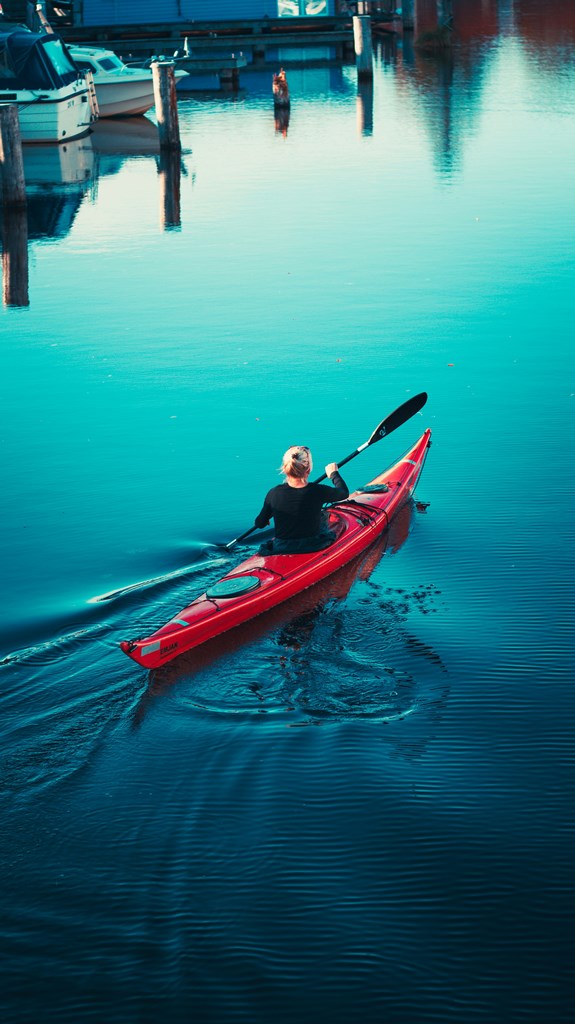
Weather Wise: Understanding Wind’s Impact on Kayaking Safety
While kayaking offers a serene escape, being weather-wise is paramount for safety. Let’s focus on wind, a key factor influencing kayaking conditions.
Heavy rain might make things a bit more challenging, but wind can have a dramatic effect on your experience, especially on larger bodies of water. Before setting off, gain a clear understanding of the wind forecast for your paddling timeframe.
The level of detail you need depends on your location. If you’re venturing out on the coast, where winds can change rapidly and unpredictably, staying attuned to local weather patterns becomes even more crucial. Here’s a breakdown of wind considerations:
- Light Winds (Under 10 knots): Ideal conditions for most kayaking adventures. Light winds offer a gentle breeze without significantly affecting your paddling.
- Moderate Winds (10-15 knots): For experienced kayakers, moderate winds can be manageable. However, they can create choppier water and require more effort to maintain stability.
- Strong Winds (Above 15 knots): Strong winds are best avoided by beginner and intermediate kayakers. They can make paddling incredibly difficult and significantly increase the risk of capsizing.
Beyond Wind:
While wind plays a major role, don’t forget to consider other weather factors like rain, visibility, and potential storms. In the next section, we’ll explore how to gather comprehensive weather information to ensure a safe and enjoyable paddling adventure.
Decoding the Water: Mastering the Art of Reading Conditions
Respecting the environment you’re about to enter is paramount for safe kayaking. Accurate weather forecasts are your key to planning and understanding the necessary safety precautions.
Here’s how reading conditions empower you:
- Weather Wisdom: An accurate forecast allows you to anticipate potential challenges like strong winds, sudden storms, or heavy rain. With this knowledge, you can make informed decisions. For instance, if the forecast predicts volatile weather with a high chance of storms, most responsible kayak rental services might close for the day. Following their lead and rescheduling for a safer time demonstrates responsible kayaking practice.
- Water Temperature Awareness: Understanding the water temperature is crucial. Cold water can lead to hypothermia and potentially life-threatening situations. This is particularly important for sea kayaking, where offshore winds and unpredictable weather changes can quickly escalate a situation. Knowing the water temperature allows you to dress appropriately and be prepared for potential immersion.
Beyond the Basics:
While weather and water temperature are key factors, there’s more to reading conditions. In the next section, we’ll explore additional environmental factors to consider before launching your kayak for a safe and enjoyable adventure. So, reading the weather and water conditions you’re kayaking in is vital to both performance and safety.
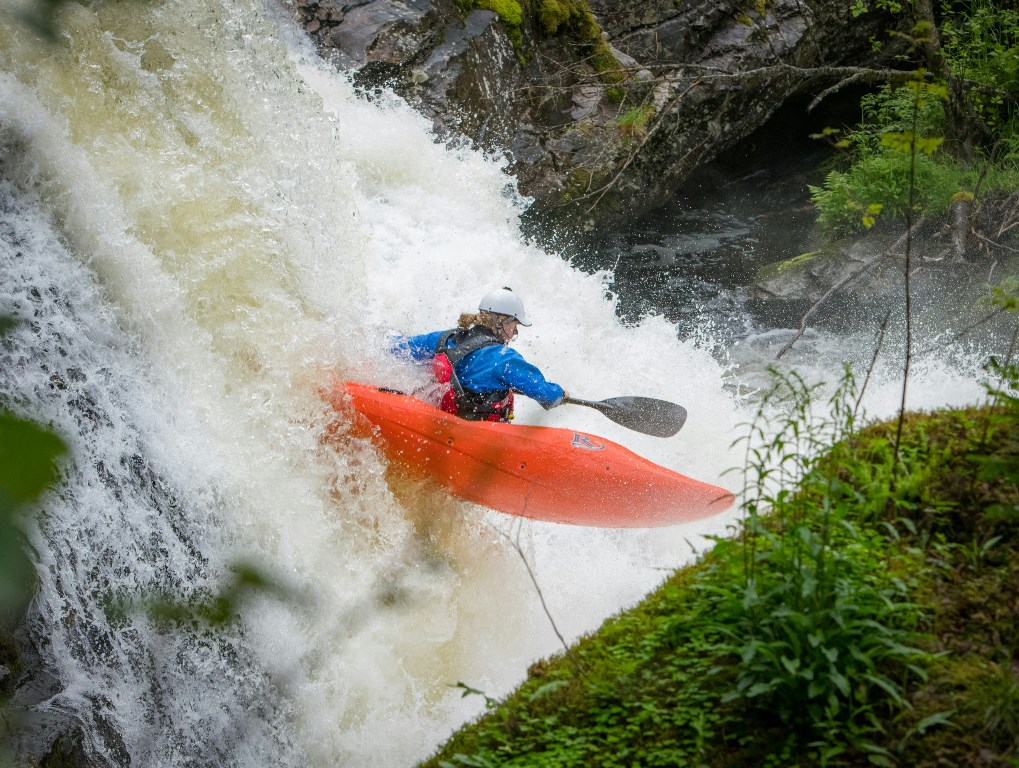
Pack Smart, Paddle Safe: Essential Gear for Kayaking Adventures
Equipping yourself with the right gear is a vital step in ensuring a safe and enjoyable kayaking experience. The specific items you need will vary depending on your planned route, water conditions, and the duration of your trip. Here’s a breakdown of essential and additional gear to consider:
Safety First: Your Core Gear List
- PFD (Personal Flotation Device): This is not just a legal requirement; it’s your lifeline on the water. Always wear a properly fitted PFD!
- Flashlight or Flare: Be prepared for low-light situations or emergencies with a reliable light source to signal for help.
- First-Aid Kit: Pack a well-stocked first-aid kit to address minor injuries or unexpected situations.
- Whistle: A simple whistle provides a loud, effective way to signal for help, especially if your voice is hoarse or you need to conserve energy.
- Bilge Pump: This handy tool helps remove unwanted water that accumulates in your kayak, keeping you afloat and stable.
Comfort and Convenience: Enhancing Your Paddle
- Dry Bag: Protect your belongings from splashes and moisture with a waterproof dry bag. Perfect for storing essential supplies, snacks, and extra clothing.
- Snacks and Beverages: Stay fueled and hydrated on longer trips by packing enough snacks and water to meet your needs.
Beyond the Basics: Gear for Extended Adventures and Challenging Conditions
For longer journeys or navigating rougher waters, consider adding these items to your gear list:
- Helmet: A crucial safety element for whitewater kayaking or navigating rapids. Protects your head from potential impacts.
- GPS Device or Map: Modern GPS devices offer convenient navigation, while maps provide a traditional backup option. Knowing your location is vital for safety.
- Tow Bag: An essential tool for group kayaking. Contains tow ropes to assist a fellow paddler who might become incapacitated.
- Float Bag: Provides buoyancy and helps keep your gear afloat in case of a capsize. Inflatable options offer convenient storage.
- Spray Skirt: Shields your cockpit from water splashing in during rough conditions or whitewater kayaking. Easily detachable when not needed.
- Extra Paddle: A wise precaution for longer trips or challenging waters. Paddles are generally durable, but having a backup ensures you’re not stranded with a broken one.
- Marine Radio (VHF) or Satellite Messenger: A reliable way to call for help in case of emergencies or getting lost. Consider both options and choose the one that best suits your paddling location and budget.
- Sun Screen: Protect yourself from harmful UV rays with proper sunscreen, especially on longer kayaking trips.
- Repair Kit: Pack a basic repair kit to address minor tears or punctures in your kayak on the go.
Remember: This list is a starting point. Research and tailor your gear selection based on your specific kayaking plans and skill level. Always prioritize safety and ensure you have the necessary equipment to navigate your chosen environment confidently.
Dress for Success: Kayaking Apparel for Optimal Comfort and Safety
Your clothing choices play a crucial role in your kayaking safety and overall experience. Dressing appropriately for the water conditions ensures comfort, warmth, and protection.
Here are some key considerations:
- Water Temperature: Cold water poses a significant risk of hypothermia. When paddling in cold environments, consider layering with synthetic thermals under a wetsuit or dry suit. These garments provide insulation and protection from the elements.
- Weather Conditions: Be prepared for the weather forecast. Pack rain gear if rain is expected, and dress in sun-protective clothing for sunny days. A hat and sunglasses can further shield you from the sun’s harmful rays.
- Sun Protection: Even on cloudy days, UV rays can be damaging. Sunscreen with SPF 30 or higher is essential to protect your exposed skin. Reapply sunscreen regularly, especially after swimming or getting splashed.
- Footwear: Choose footwear that provides good traction and protects your feet. Water shoes or sandals with good grip are ideal. Avoid wearing flip-flops or shoes that can easily slip off.
- Staying Dry: While some water exposure is inevitable, quick-drying materials like nylon or polyester can help keep you feeling comfortable throughout your kayaking adventure.
Remember: Dress for the water temperature, not the air temperature. Being wet and cold in warm air can be more dangerous than you might think. By dressing appropriately, you’ll be setting yourself up for a safe and enjoyable kayaking experience.
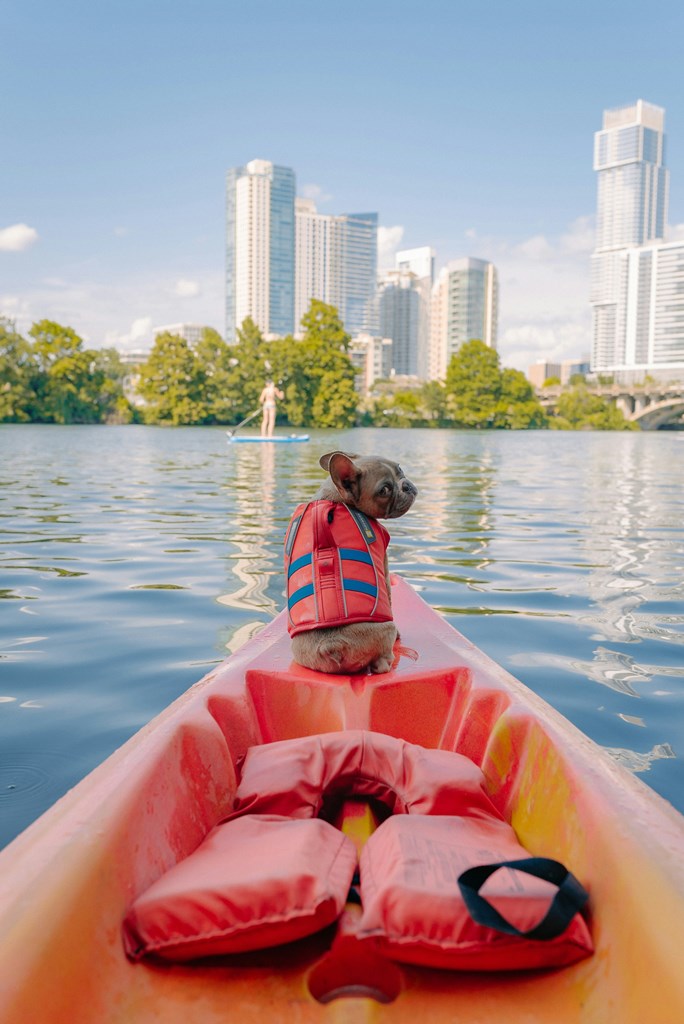
Prepare for the Unexpected: Crafting a Kayak Emergency Plan
A well-defined emergency plan is the cornerstone of a stress-free and enjoyable kayaking adventure. Here are key steps to take before you launch:
- Share Your Itinerary: Always inform someone responsible about your planned route, destination, and estimated return time. This allows them to raise the alarm if you don’t return as expected.
- Be Weather Wise: Understanding the weather forecast is crucial. Avoid kayaking during storms or periods of high winds. Respecting the power of nature significantly reduces the risk of emergencies.
- Double-Check Your Gear: Ensure you have all the necessary safety equipment based on your paddling location and the conditions. Solo ocean kayakers require a more extensive safety kit compared to a group navigating calm waters.
- Communication is Key: Have a reliable way to call for help in case of emergencies. Research local rescue authorities and emergency contact numbers in the area you’ll be paddling.
- Hazard Awareness: Research any potential hazards specific to your chosen location. Is the water known for strong currents or unpredictable tides? Are there wild animals you need to be aware of? Knowing potential risks allows you to plan accordingly and react appropriately if encountered.
Responding to Medical Emergencies:
While we hope for smooth sailing, here’s a quick reference for recognizing and responding to common medical emergencies on the water:
- Hypothermia: This life-threatening condition occurs when your body loses heat faster than it can produce it. Symptoms include shivering, drowsiness, confusion, memory loss, exhaustion, and slurred speech. If you suspect hypothermia, get the person to a dry, warm place, remove wet clothing, and gently dry them. Seek immediate medical attention.
- Heatstroke: Overexposure to heat and dehydration can lead to heatstroke. Symptoms include confusion, hot, dry skin, seizures, and high body temperature. Move the person to a shaded area, cool them down with cold water or damp cloths, and prioritize contacting emergency services.
Remember: This is a general guide. For detailed first-aid procedures, consider taking a certified first-aid course before venturing out on your kayaking adventures.
By following these steps and being prepared for the unexpected, you’ll significantly enhance your kayaking safety and ensure a more peaceful and enjoyable experience on the water
.
Empower Yourself: Mastering Self-Rescue Techniques for Kayaking
While kayaking offers a serene escape, being prepared for potential mishaps is essential. Self-rescue skills empower you to handle unexpected situations on the water, boosting your confidence and safety.
Learning the Ropes:
The best way to acquire self-rescue techniques is through an experienced mentor or instructor. They can guide you through proper procedures and ensure you practice them safely in a controlled environment.
Don’t Fear the Challenge:
Self-rescue skills might seem complex initially, but with practice, they become second nature. Remember, these techniques can vary depending on the type of kayaking you do. Whitewater kayaking requires different manoeuvres compared to ocean kayaking.
Essential Skill: The Paddle Float Rescue
One of the most fundamental self-rescue techniques for kayakers is the paddle float rescue, also known as the wet exit recovery. This technique helps you recover from a capsize and get back into your kayak.
Mastering Self-Rescue:
In the next section, we’ll delve deeper into the paddle float rescue technique, breaking it down into manageable steps. We’ll also explore additional self-rescue skills that can equip you to handle various situations on the water with confidence.
Chart Your Course: Mastering Navigation for Kayaking Confidence
Confident navigation is a key ingredient for a safe and enjoyable kayaking experience. Here’s how you can hone your skills and become a master of the map (or app):
- Map Mastery: Familiarize yourself with reading maps and understanding navigational symbols. Learn to plot your course and identify landmarks that will guide you on your journey.
- Weather Wise: Weather patterns significantly impact navigation. Understanding how wind and currents can affect your route allows you to plan accordingly and avoid getting blown off course.
- Practice Makes Perfect: Plan short kayaking trips with the specific goal of practicing navigation using landmarks, a compass, or a GPS device. This will build your confidence and refine your skills.
Offshore Navigation:
For ocean kayakers, navigation becomes even more critical. Here’s why:
- Unpredictable Winds: Offshore winds can quickly push you off course, making it essential to be proficient in navigation techniques.
- Changing Weather: Ocean weather can be dynamic. Strong winds or sudden storms might necessitate altering your route for safety. Having strong navigation skills allows you to adapt effectively.
The Importance of a Competent Navigator:
Ideally, at least one person in your ocean kayaking group should be a skilled navigator. This ensures someone can confidently guide the group, especially if challenging weather conditions arise.
Beyond the Basics:
In the next section, we’ll explore the different navigation tools available to kayakers, from traditional compasses and maps to modern GPS devices. We’ll help you choose the right tools and techniques to conquer any kayaking adventure with confidence.
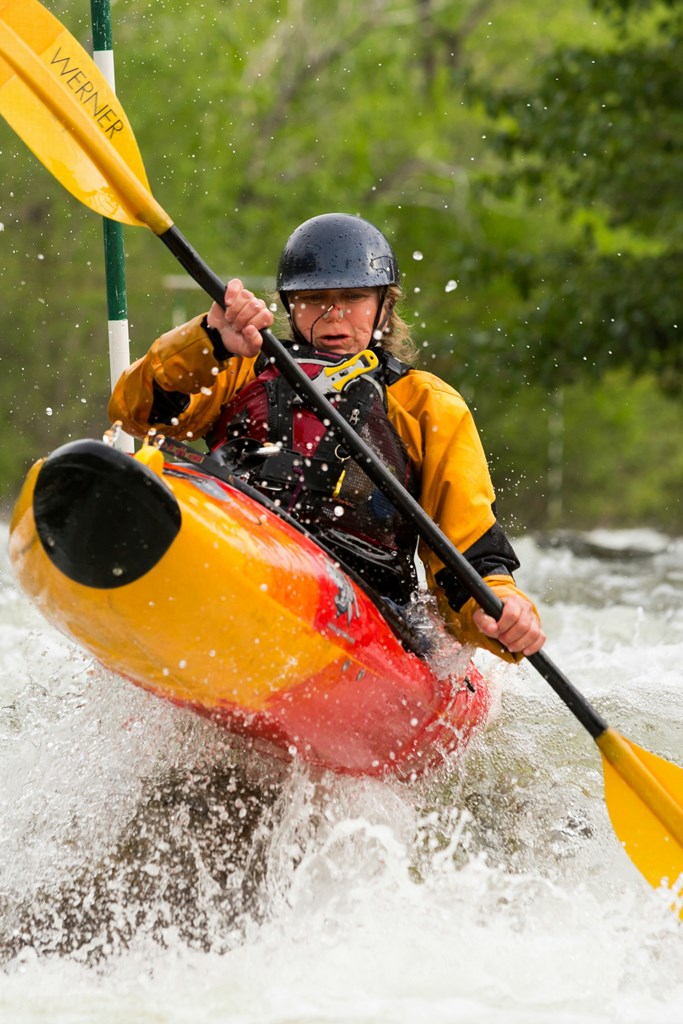
Paddle Smart, Stay Safe: Putting Kayak Safety into Action
Now that you’re armed with essential knowledge for safe kayaking, let’s transition from preparation to putting it all into practice on the water. Remember, the best safety practices are proactive, allowing you to relax and truly enjoy your kayaking adventure.
Here are some key actions to take once you’ve launched:
- Embrace Calmness: A prepared mind is a calm mind. Knowing you’ve taken the necessary precautions allows you to focus on paddling and enjoying the scenery.
- Stay Hydrated: Pack enough water and drink regularly, especially on longer trips. Dehydration can impair your judgment and lead to fatigue.
- Mind the Weather: Keep an eye on the weather throughout your paddle. If conditions change unexpectedly, head back to shore and don’t hesitate to adjust your plans for safety.
- Paddle Within Your Limits: Don’t push yourself beyond your comfort level or skillset. Start with shorter paddles in calm waters and gradually progress as you gain experience.
- Respect Your Body: Take breaks when needed. Listen to your body’s signals and avoid paddling to exhaustion.
Safety and Performance: A Winning Combination
Remember, many safe paddling practices also contribute to better performance. By staying hydrated and managing your energy levels, you’ll have more endurance and enjoy a more comfortable kayaking experience.
In the next section, we’ll delve deeper into specific paddling techniques that can enhance your safety and enjoyment on the water.
Mastering the Moves: Paddling Techniques for Enhanced Safety and Performance
While proper paddling technique isn’t essential for casual kayakers exploring calm waters, it becomes increasingly important for solo adventurers, long-distance journeys, and navigating challenging conditions. Here’s why:
- Efficiency and Endurance: Good paddling technique translates to smoother strokes that conserve energy and minimize fatigue. This is especially crucial for longer kayaking trips or battling currents.
- Stability and Control: Efficient paddling techniques promote better balance and control over your kayak. This becomes paramount when manoeuvring in rough waters or navigating rapids.
Beginner Paddlers:
If you’re a beginner, focus on enjoying the experience and basic paddling strokes. There’s no need to overcomplicate things at this stage.
Advanced Paddlers:
For more adventurous kayakers, consider enrolling in a paddling clinic or seeking guidance from an experienced paddler. They can help you refine your technique, focusing on areas like:
- Forward Stroke: Mastering the proper forward stroke allows for efficient propulsion while minimizing wasted energy.
- Sweep Stroke: This stroke is essential for steering and manoeuvring your kayak, especially when navigating tight spaces or changing direction.
- Reverse Sweep Stroke: The reverse sweep stroke helps you slow down, stop, or manoeuvre backwards.
Safety Through Skill:
Developing good paddling techniques is an ongoing process that contributes significantly to both safety and enjoyment on the water. By refining your strokes, you’ll gain confidence, improve your efficiency, and navigate more challenging kayaking environments with greater control.
Paddle Wisely: Know Your Limits and Embrace Self-Awareness
Understanding and respecting your limitations is a cornerstone of safe kayaking. This applies especially when venturing into unfamiliar waters.
Here’s why staying within your limits is crucial:
- Fatigue & Judgment: Paddling while fatigued can impair your judgment and lead to critical mistakes. Being aware of your endurance limits allows you to plan trips that match your fitness level and avoid exhaustion.
- Gradual Progression: Don’t jump into challenging kayaking adventures before you’re ready. Build your experience and endurance gradually by starting with shorter paddles in calm waters. As you gain confidence and skill, you can then progress to more demanding environments.
Testing Your Limits Safely:
If you’re unsure about your endurance, test it out on short paddling trips in calm, familiar waters. This allows you to gauge your limitations in a controlled environment and build confidence for future adventures.
The Benefits of Self-Awareness:
By being a self-aware paddler, you’ll make sound decisions about your route, paddling duration, and overall exertion level. This proactive approach significantly enhances your kayaking safety and allows you to enjoy the experience to the fullest.
Paddle Smart, Stay Hydrated: The Importance of Water for Kayaking Safety
Dehydration is a sneaky enemy for kayakers. Here’s why staying hydrated is paramount for a safe and enjoyable paddling experience:
- Maintaining Focus: Proper hydration keeps you alert and focused on paddling effectively. When dehydrated, you become more susceptible to fatigue and mental fog, potentially leading to errors in judgment.
- Energy Levels: Water is essential for optimal physical performance. Dehydration can zap your energy reserves, making paddling more difficult and leaving you feeling sluggish.
- Planning Ahead: It’s easy to get absorbed in the beauty of your surroundings and forget to drink. Pack enough water for your entire trip, factoring in the duration, weather conditions, and your exertion level.
Thirst is a Warning Sign:
Don’t wait until you feel thirsty to reach for your water bottle. By the time you experience thirst, your body is already on its way to dehydration. Sipping water regularly throughout your paddle is the key to staying hydrated.
Hydration Tips for Kayakers:
- Choose the Right Container: A reusable water bottle with a secure lid is ideal. Hydration packs offer convenient hands-free access to water.
- Flavor it Up: Adding a squeeze of citrus or using sugar-free flavor packets can make plain water more appealing, especially on long trips.
- Consider Electrolytes: For extended paddling adventures, electrolyte-enhanced beverages can help replenish minerals lost through sweat.
Hydration and Safety:
Staying hydrated is not just about comfort; it’s a safety imperative. By prioritizing your water intake, you’ll maintain your energy levels, focus, and overall well-being on the water.
Sharing the Water: Kayaking Safely with Wildlife
One of the unique joys of kayaking is encountering wildlife in their natural habitat. However, respecting these creatures is crucial for your safety and theirs.
Know Your Surroundings:
Research the wildlife common in your paddling area, both freshwater and ocean environments. This knowledge allows you to be prepared and act appropriately if you encounter an animal.
Freshwater Encounters:
For kayakers on rivers and streams, be aware of potential hazards like snakes or alligators. Local authorities can provide specific information about wildlife in your area and any precautions necessary.
Respectful Ocean Paddling:
Ocean kayakers share the water with various marine animals, including orcas. Always maintain a safe distance and avoid any actions that might startle or provoke these creatures. Remember, wildlife attacks are extremely rare and usually occur only when the animal feels threatened.
Peaceful Paddling:
By being a responsible and respectful paddler, you minimize the risk of negative interactions with wildlife. Maintain a safe distance, avoid loud noises, and never attempt to feed or harass animals.
Safety Through Awareness:
Sharing the water with wildlife can be a rewarding experience. By being aware of your surroundings and acting responsibly, you can ensure a safe and enjoyable kayaking adventure for yourself and the animals you might encounter.
Mastering the Entry and Exit: Safe Kayaking Techniques
Entering and exiting your kayak smoothly and safely is an essential skill for every kayaker. The specific techniques might vary depending on your launch location (beach, dock) and the type of kayak you have (sit-in, sit-on-top). Here’s a breakdown of some common entry and exit methods:
Entering from the Beach:
- The Sit and Slide: For calm, shallow water launches, this is a popular option. Straddle your kayak with one leg on either side. Gently lower yourself into the seat and scoot your body back until you’re comfortably seated. Push off with your hands to launch yourself into the water.
- The Controlled Drop: For deeper water launches, this method offers more control. Hold your paddle across the gunwales (top edge) of the kayak for stability. Sit on the edge of the cockpit with your legs in the water. Slide your body smoothly into the seat and grab your paddle.
Entering from a Dock:
- The Low Entry: Locate the lowest point of the dock for ease of entry. Sit on the edge of the dock with your legs in the kayak. Lower yourself smoothly into the seat and grab your paddle.
Exiting Your Kayak:
- The Basic Exit: While seated, place your paddle blade in the water for stability. Lean forward, place your hands on the gunwales, and lift yourself out of the seat in a controlled manner. Step carefully onto the dock or the beach.
Remember: These are general guidelines. Always consult your kayak owner’s manual for specific recommendations for your kayak model.
Practice Makes Perfect:
Before venturing out on the water, practice entering and exiting your kayak in a safe, controlled environment. This will build your confidence and ensure a smooth launch and landing every time.
Safety First:
Always prioritize safety when entering and exiting your kayak. Use proper form, avoid sudden movements, and ensure you have a stable base before pushing off or standing up.
Navigate Smoothly: Kayaking Rules, Regulations, and Safety Resources
Understanding the rules of the water is an essential element of safe kayaking. Here’s a breakdown of key resources and information to get you started:
Know Your Governing Bodies:
- NASBLA (National Association of State Boating Law Administrators): This organization sets standards for boating safety and instructor certification. Their website can provide valuable information about boating regulations in your state. (https://www.nasbla.org/)
- American Canoe Association (ACA): A non-profit dedicated to paddlesports, the ACA offers kayaking courses, safety resources, and instructor certification programs. You can find them at https://americancanoe.org/
Respect the Coast Guard:
- US Coast Guard Search and Rescue (SAR): The Coast Guard is responsible for maritime search and rescue operations in the United States. Familiarize yourself with their emergency procedures and communication protocols. You can find their website at https://www.uscg.mil/.
Be Prepared for Emergencies:
- Communication: In emergencies, use VHF radio Channel 16 (156.8 MHz) to contact the Coast Guard. As a backup, you can also dial 911 from your cell phone if you have a signal.
- Signalling: Carry a flashlight or flares to signal for help in low-light conditions.
- Staying Calm: If faced with an emergency, prioritize staying calm. Conserve your energy and focus on protecting yourself from the elements until help arrives.
- Emergency Plan: Always have a plan in place before you launch. This includes informing someone about your trip details, checking the weather forecast, ensuring you have proper safety gear (including a life jacket), and potentially bringing a basic first-aid kit. If possible, having someone in your group with first-aid training is a plus.
Additional Safety Tips:
- Buddy Up: For beginner or less confident kayakers, paddling with a group is always recommended. Solo kayaking can be risky, so consider this option only after acquiring sufficient experience.
- Invest in Lessons: Learning from a qualified instructor is one of the best ways to improve your kayaking skills and safety practices.
- Be Self-Reliant: Learn basic kayak repair techniques, especially for inflatable kayaks, to address minor issues on the water and get yourself safely back to shore.
- Stay Sober: Operating a kayak under the influence of alcohol is strictly prohibited and can lead to legal consequences.
Conclusion:
While a life jacket, swimming skills, and weather awareness are fundamental for safe kayaking, true confidence comes from in-depth safety knowledge. By understanding regulations through resources like the NASBLA and ACA, and familiarizing yourself with emergency protocols (channel 16, flares), you can navigate smoothly. Remember, proper safety gear (including helmets for some activities) varies based on the kayaking type, and you should always plan for the unexpected by creating an emergency plan, having communication tools, and possessing basic first-aid knowledge.
Bonus Tip:
- Regularly check your local boating authority websites for any updates or changes to regulations in your area.

